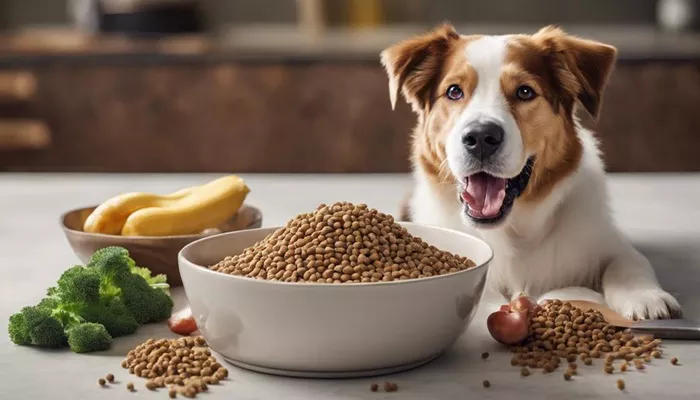When it comes to helping your dog gain weight, choosing the right dog food is crucial. Just like humans, dogs need a balanced diet to maintain a healthy weight. If your dog is underweight, it’s important to address the issue with the right nutrition. This article will guide you through the best dog food options to help your furry friend gain weight safely and effectively.
Why Is My Dog Underweight?
Before diving into the best dog food options, it’s important to understand why your dog might be underweight. Common reasons include:
Poor Diet: Low-quality dog food may not provide enough calories or nutrients.
Health Issues: Conditions like parasites, diabetes, or thyroid problems can cause weight loss.
Stress or Anxiety: Changes in environment or routine can affect a dog’s appetite.
High Activity Level: Very active dogs may burn more calories than they consume.
Age: Older dogs may have difficulty maintaining weight due to slower metabolism.
If your dog is underweight, consult your vet to rule out any underlying health issues. Once you’ve confirmed that your dog is healthy, you can focus on adjusting their diet.
What to Look for in a Dog Food for Weight Gain
Not all dog foods are created equal. To help your dog gain weight, look for the following qualities in their food:
High-Calorie Content
Weight gain requires more calories than maintenance. Look for dog foods with a higher calorie count per serving.
Foods labeled “high-energy” or “performance” are often calorie-dense.
High-Quality Protein
Protein is essential for muscle growth and repair. Choose dog foods with real meat as the first ingredient.
Aim for at least 25-30% protein content.
Healthy Fats
Fats are a concentrated source of energy. Look for foods with healthy fats like chicken fat, salmon oil, or flaxseed.
A fat content of 15-20% is ideal for weight gain.
Digestible Carbohydrates
Carbs provide energy and help with weight gain. Opt for easily digestible carbs like sweet potatoes, brown rice, or oats.
Avoid fillers like corn or soy, which offer little nutritional value.
Added Nutrients
Vitamins, minerals, and probiotics support overall health and digestion.
Omega-3 and omega-6 fatty acids promote a healthy coat and skin.
Palatability
If your dog doesn’t like the food, they won’t eat enough. Choose a flavor and texture your dog enjoys.
Best Types of Dog Food for Weight Gain
Here are some of the best dog food options to help your dog gain weight:
High-Calorie Dry Dog Food
Dry kibble is convenient and often calorie-dense. Look for brands specifically designed for weight gain or active dogs.
Examples: Royal Canin Veterinary Diet Gastrointestinal High Energy, Purina Pro Plan Sport Performance.
Wet Dog Food
Wet food is more palatable and easier to eat, especially for picky eaters or dogs with dental issues.
It’s also higher in moisture, which can help with hydration.
Examples: Hill’s Science Diet Adult Perfect Weight, Blue Buffalo Wilderness High Protein Grain-Free.
Puppy Food
Puppy food is higher in calories, protein, and fat, making it a great option for underweight adult dogs.
Be cautious with portion sizes to avoid overfeeding.
Examples: Wellness Complete Health Puppy, Taste of the Wild Puppy Formula.
Raw or Freeze-Dried Dog Food
Raw diets are nutrient-dense and highly digestible. They often contain high-quality meat, organs, and bones.
Freeze-dried options offer similar benefits with added convenience.
Examples: Stella & Chewy’s Freeze-Dried Raw, Primal Pet Foods.
Homemade Dog Food
If you prefer to control your dog’s diet, homemade meals can be tailored to their needs.
Include lean meats, healthy fats, and digestible carbs. Consult your vet for a balanced recipe.
How to Transition to a New Dog Food
Switching your dog’s food too quickly can upset their stomach. Follow these steps for a smooth transition:
Start Slowly: Mix a small amount of the new food with their current food.
Gradually Increase: Over 7-10 days, increase the proportion of the new food.
Monitor Your Dog: Watch for any signs of digestive upset, such as diarrhea or vomiting.
Adjust as Needed: If your dog reacts poorly, slow down the transition or try a different food.
Tips for Helping Your Dog Gain Weight
In addition to choosing the right dog food, here are some tips to help your dog gain weight:
Feed More Frequently
Offer smaller meals 3-4 times a day instead of one or two large meals.
Add Toppers
Enhance your dog’s food with high-calorie toppers like boiled chicken, scrambled eggs, or a spoonful of plain yogurt.
Use Supplemente
Weight-gain supplements can provide extra calories and nutrients. Look for products with natural ingredients.
Limit Exercise
While exercise is important, too much can burn excess calories. Adjust your dog’s activity level as needed.
Monitor Progress
Weigh your dog regularly to track their progress. Aim for a gradual weight gain of 1-2% per week.
Foods to Avoid
While it’s tempting to feed your dog human food to help them gain weight, some foods are harmful. Avoid the following:
Chocolate: Toxic to dogs.
Grapes and Raisins: Can cause kidney failure.
Onions and Garlic: Can damage red blood cells.
High-Sodium Foods: Can lead to dehydration and other health issues.
Fatty Foods: Can cause pancreatitis.
When to Consult a Vet
If your dog isn’t gaining weight despite your efforts, consult your vet. They may recommend:
Blood Tests: To check for underlying health issues.
Prescription Diets: Specially formulated for weight gain.
Appetite Stimulants: To encourage eating.
Conclusion
Helping your dog gain weight requires a combination of the right diet, portion control, and monitoring. Choose a high-quality dog food that’s rich in calories, protein, and healthy fats. Transition slowly, and consider adding toppers or supplements for extra nutrition. Always consult your vet if you’re unsure about your dog’s health or dietary needs.
With patience and the right approach, your dog can reach a healthy weight and enjoy a happier, more active life.
Related topics:
How Can I Transition My Dog to a Healthy Diet?
What Food is Best for a Chihuahua?
Can I Feed My Dog Vegetables or Fruits Safely?


